
- Home
- Travel Packages
- Top Destination
-
Travel Attraction
By Category
Top Attraction

- Travel Agents
- Car Rentals
- Hotels
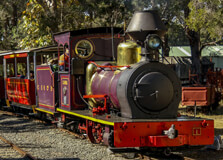
Illawarra Light Railway Museum
The Illawarra Light Railway Museum, located in Wollongong, New South Wales, is a fascinating destination for railway enthusiasts, history buffs, and anyone interested in the rich heritage of Australian rail travel. This museum offers visitors a unique opportunity to explore and experience the history of the Illawarra region’s railway system, with a focus on its light rail network. The museum is home to a variety of vintage locomotives, carriages, and other railway-related artifacts, allowing visitors to step back in time and gain a deeper appreciation for the engineering and history behind one of the region's most vital transport systems. How to Reach Illawarra Light Railway Museum, Wollongong The Illawarra Light Railway Museum is located in the suburb of Albion Park Rail, just a short drive from Wollongong city center. To reach the museum, visitors can take the Princes Highway (A1) heading south from Wollongong. The museum is well-signposted, and there is ample parking available on-site for those driving. The museum is located about a 20-minute drive from Wollongong, making it easily accessible for both locals and tourists. If you prefer public transport, you can take a train to Albion Park Station, which is nearby. From the station, it is only a short walk to the museum. Bus services also operate in the area, making it easy for visitors traveling by public transport to access the museum. Weather and Timing Wollongong, where the Illawarra Light Railway Museum is located, enjoys a temperate climate with warm summers and mild winters. The best time to visit the museum is during the spring and autumn months, from September to November and March to May, as the weather is comfortable, and the crowds are usually smaller. Summer (December to February) is warmer, with temperatures ranging from 20°C to 28°C, while winter (June to August) is cooler, with temperatures ranging from 10°C to 17°C. The museum is open for visits throughout the year, but it’s always a good idea to check its official website or contact the staff for specific hours of operation, especially during public holidays or special events. The museum typically opens on weekends, with special events and exhibitions occasionally hosted on weekdays. Why Illawarra Light Railway Museum is Famous for Wollongong The Illawarra Light Railway Museum is famous for its dedication to preserving and showcasing the region's railway history. It is one of the few museums in Australia that focuses specifically on the history of light rail transport, making it a unique attraction. The museum provides a rare chance to view historical trains and other railway artifacts that were once part of the daily life of local communities. It serves as a reminder of the vital role that trains played in the development of the region and the Australian transport system as a whole. One of the key features that make the museum famous is its working steam and diesel locomotives. Visitors have the opportunity to see these trains in action, as well as learn about the engineering innovations that helped shape the railway industry in Australia. The museum also offers train rides for those looking for an interactive experience, allowing them to ride on heritage trains and experience the charm of historical railway travel. Entry and Visit Details about Illawarra Light Railway Museum Entry to the Illawarra Light Railway Museum is reasonably priced, with discounts available for children, students, and seniors. Visitors are encouraged to check the museum's website or call ahead for up-to-date entry fees, as they may vary depending on the season or special events. There are often special deals and discounts during school holidays and other promotional periods. The museum is open on weekends, typically from 10:00 AM to 4:00 PM, and on certain public holidays. It is also advisable to check for special train ride schedules, as these are available on certain days throughout the year. Group tours are available, and it’s a great place for educational visits, particularly for school groups interested in learning about the history of transport in Australia. History and Architecture of Illawarra Light Railway Museum The Illawarra Light Railway Museum has its roots in the preservation of the region’s railway history. The museum was established in 1987 by the Wollongong Division of the New South Wales Rail Transport Museum. The museum is located on land that was once part of the Albion Park Railway Station, which was an important stop on the Illawarra Railway line. The museum itself occupies a charming site that features a variety of old railway buildings, including a former station building and a working depot. The collection includes a range of railway vehicles, including vintage trains, locomotives, carriages, and other historical transport equipment. The architecture of the site reflects its historical significance, with structures that retain much of their original charm and character. Things to Do at Illawarra Light Railway Museum The Illawarra Light Railway Museum offers a range of activities and experiences for visitors of all ages. Some of the things to do at the museum include: Train Rides: One of the highlights of the museum is the opportunity to ride on heritage trains. Visitors can enjoy short train rides around the site, experiencing the thrill of a vintage steam or diesel locomotive in action. Explore Exhibits: The museum features a wide range of exhibits, including old locomotives, carriages, signage, and other railway artifacts. You can take a leisurely stroll through the museum and discover the history of the Illawarra Light Railway network. Learn About Railway History: The museum offers detailed information about the history of trains in the Illawarra region, showcasing the impact of rail transport on local communities and industries. Attend Special Events: The museum often hosts special events, such as heritage train rides, steam festivals, and educational talks about the history of Australian rail transport. These events are a great way to get a deeper understanding of the railway’s cultural and historical significance. Shop for Memorabilia: The museum’s gift shop offers a range of railway-related memorabilia, including model trains, books, and other items that make perfect souvenirs for visitors. Facts and Tips about Illawarra Light Railway Museum Interesting Facts: The museum is home to a unique collection of vintage trains and locomotives, many of which were used in the Illawarra region. It is one of the few railway museums in Australia dedicated to preserving the history of light rail transport. Visitors can take a ride on a fully operational heritage steam train, which is a rare experience in modern-day Australia. The museum’s location, near the original Albion Park Railway Station, adds to the authenticity and historical charm of the site. Travel Tips: Check the museum’s website or contact them for information about special events or train ride schedules before your visit. Wear comfortable footwear, as there is a fair amount of walking involved when exploring the exhibits. If visiting with children, be sure to check for family-friendly activities or educational programs that are available during your visit. Consider visiting on weekends or during school holidays to take advantage of the special train rides offered by the museum.
Explore More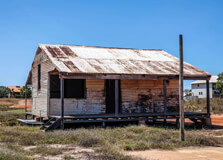
The Broome Historical Museum is a treasure trove of information and artifacts that tell the fascinating story of Broome’s past. Located in the northwestern town of Broome, Western Australia, this museum provides deep insight into the region's cultural, economic, and social heritage. From its early pearling days and World War II history to the multicultural influences that shaped the town, the museum offers a rich and educational experience for all ages. The museum is set within two heritage-listed buildings—one a former Customs House and the other a courthouse. With carefully curated exhibitions, photographs, audio recordings, and original artifacts, the museum captures the spirit of Broome and its unique place in Australian history. How to Reach Broome Historical Museum, Broome The Broome Historical Museum is located at 67 Robinson Street, in the heart of Broome. It’s easily accessible by car, bike, or foot, especially if you are staying in Broome’s town center. From Broome International Airport, it’s only a 5-10 minute drive or taxi ride. Public buses and tour services around town also stop near the museum, making it convenient for tourists. There is free parking available outside the museum, and bicycle racks are provided for visitors cycling from nearby areas. Weather Broome experiences a tropical climate with two distinct seasons: the dry season (May to October) and the wet season (November to April). The dry season is the most popular time to visit, with pleasant temperatures ranging from 20°C to 30°C and minimal rainfall. This is when the museum sees the highest number of visitors. During the wet season, the area experiences higher humidity, heavy rainfall, and occasional storms. While the museum may still be open, visitor numbers are lower, and it's best to check local weather forecasts and opening hours before visiting during this time. Timing The Broome Historical Museum is generally open from 10:00 AM to 1:00 PM daily during the peak tourist season (April to October). Hours may be shorter or vary during the off-season, so it is advisable to check their official website or contact the museum before planning your visit. Most visitors spend around 1 to 2 hours exploring the museum, but history enthusiasts might enjoy spending longer. Guided tours are sometimes offered by volunteers and provide deeper context about Broome's fascinating past. Why Famous for Broome? The Broome Historical Museum plays a key role in preserving the town’s rich and multicultural heritage. Broome has a long and complex history shaped by Aboriginal culture, the pearling industry, Japanese immigrants, and European settlers. The museum documents these influences through detailed exhibits and personal stories. It is especially famous for its displays on the pearling era, wartime bombing of Broome during World War II, and its Aboriginal heritage. For many, the museum offers an emotional and educational connection to the town's diverse past, making it a must-visit destination in Broome. Entry and Visit Details about Broome Historical Museum, Broome The entry fee to the museum is modest and helps support the ongoing preservation of Broome’s history. Adults generally pay around AUD $12, while concessions and children are offered discounted rates. Family tickets are also available. The museum is wheelchair accessible and offers brochures and displays in several languages. There is a small gift shop with local books, souvenirs, and handmade crafts available for purchase. Donations are welcome, and visitors are encouraged to support the museum’s upkeep and community programs. History and Architecture The Broome Historical Museum is housed in two significant heritage buildings. The main building was originally the town’s Customs House and later served as the Broome Courthouse. These colonial-era buildings were constructed in the late 19th century and reflect simple but sturdy architecture suited to the region’s climate. The museum was established in the 1970s by local volunteers and the Broome Historical Society. Since then, it has grown into one of the most respected regional museums in Western Australia. The architecture and old photographs in the exhibits give visitors a strong sense of what life was like in Broome over the past century. Things to Do The Broome Historical Museum offers a variety of engaging activities and displays: Explore Pearling History: Learn about Broome’s pearling industry and view actual pearl diving gear, boats, and tools used in the early 20th century. Aboriginal Culture Displays: Understand the rich cultural heritage of the Yawuru people, the traditional custodians of the land. World War II Exhibit: See exhibits related to the bombing of Broome in 1942, including survivor accounts and photographs. Japanese Cemetery Stories: Discover the stories behind Japanese divers who contributed to Broome’s economy and community. Audio-Visual Presentations: Watch short documentaries and interviews with long-time residents and historians. Photography and Memorabilia: Enjoy thousands of archived images and personal items donated by Broome families. Facts and Tips about Broome Historical Museum, Broome Here are some interesting facts and helpful tips for your visit: Volunteer-Run: The museum is run mainly by volunteers from the Broome Historical Society, making it a true community effort. Historical Cemetery Nearby: The Japanese Cemetery is located nearby and can be visited in the same trip. Photography Allowed: Visitors can take non-flash photos inside most areas of the museum. Quiet Time: If you prefer a quieter visit, come early in the morning when it’s less crowded. Great for Families: Children can learn about Broome through fun exhibits, including interactive displays and storytelling boards. Educational Resource: The museum is an excellent learning spot for school groups and researchers. The Broome Historical Museum is more than just a building—it’s a living record of a town shaped by adventure, struggle, and multicultural cooperation. Whether you are a history lover or a casual traveler, the museum offers a deep, meaningful glimpse into the people and events that made Broome the unique place it is today.
Explore More
The National Museum of Australia is a premier cultural institution located in Canberra. It showcases the rich history, heritage, and diverse cultures of Australia, covering Indigenous histories, European settlement, and contemporary society. How to Reach National Museum of Australia, Canberra By Car: Free and paid parking available on-site. By Bus: Regular public transport services connect the museum with central Canberra. By Bicycle/Walking: Located near Lake Burley Griffin, it is accessible via scenic walking and cycling paths. Weather in Canberra Canberra has four distinct seasons: Summer (December-February): Warm, 12-30°C (54-86°F). Autumn (March-May): Mild, 7-20°C (45-68°F). Winter (June-August): Cold, 0-12°C (32-54°F). Spring (September-November): Pleasant, 5-22°C (41-72°F). Timings of National Museum of Australia Open daily from 9 AM to 5 PM. Closed on Christmas Day. Why is National Museum of Australia Famous? The museum is known for its engaging exhibitions on Australian history, including Indigenous cultures, settlement history, and modern societal changes. It also features unique interactive displays and temporary exhibitions. Entry and Visit Details Entry: Free general admission, but some special exhibitions may have fees. Guided Tours: Available for a fee, providing in-depth insights into exhibits. History and Architecture Opened in 2001, the museum's architecture is inspired by a puzzle, symbolizing Australia's diverse and interwoven history. The building's unique design, with bright colors and curved shapes, makes it a striking landmark in Canberra. Things to Do Explore Permanent Exhibitions: Covering Indigenous heritage, environmental history, and contemporary Australia. Visit the Garden of Australian Dreams: An interactive outdoor exhibit reflecting Australia's landscapes and history. Enjoy Hands-on Activities: Interactive displays and workshops for families and children. Facts about National Museum of Australia Designed by architect Howard Raggatt. Home to the famous "Circa" rotating theatre. Houses the world’s largest collection of Aboriginal bark paintings. Tips for Visiting Plan at least 2-3 hours to explore exhibits thoroughly. Check the museum’s website for current temporary exhibitions. Visit the café for scenic views of Lake Burley Griffin.
Explore More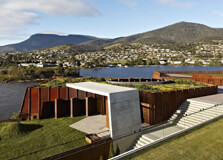
MONA, short for the Museum of Old and New Art, is one of the most popular and unique attractions in Hobart, Tasmania. Opened in 2011 by Tasmanian millionaire David Walsh, MONA has become famous around the world for its bold, unconventional, and sometimes controversial approach to art. It is the largest privately-funded museum in the Southern Hemisphere and is located on the banks of the River Derwent, just outside of Hobart. How to Reach MONA, Hobart Getting to MONA is an experience in itself. The most popular and scenic way to reach MONA is by ferry from Hobart’s Brooke Street Pier. The ferry ride takes about 25 minutes and offers great views of the city and river. MONA’s private ferry, the MONA ROMA, is stylish and themed, featuring sheep-shaped seats and a funky vibe. Alternatively, you can drive to MONA. It is about 11 kilometers from the city center and takes roughly 20 minutes by car or taxi. Public buses also run from Hobart to Berriedale, where the museum is located. There's also ample parking if you decide to drive yourself. Weather in Hobart Hobart has a mild oceanic climate. Summers (December to February) are generally warm and pleasant with temperatures ranging from 12°C to 25°C. Winters (June to August) are cool and sometimes rainy, with average temperatures ranging from 4°C to 12°C. Spring and autumn are mild and beautiful seasons to visit MONA, though it’s open year-round. It’s a good idea to bring a jacket, even in summer, as the weather in Hobart can change quickly. Rain showers are common, so packing a small umbrella or raincoat is recommended. Timing of MONA MONA is open from Friday to Monday, from 10:00 AM to 5:00 PM. It is closed on Tuesdays and Wednesdays, and sometimes on special holidays or for maintenance. It's always a good idea to check the official MONA website before planning your visit to confirm current opening hours and any changes. Why is MONA Famous in Hobart? MONA has gained worldwide recognition for its daring and experimental exhibitions. It challenges traditional ideas of what a museum should be and presents art in a bold and often provocative way. Some of its pieces explore themes of sex, death, and human nature, which has sparked both praise and controversy. The museum has significantly boosted tourism in Tasmania and has become a cultural landmark. It’s not just a museum; it’s a complete experience involving art, architecture, wine, fine dining, and performance. Entry and Visit Details about MONA, Hobart Entry to MONA is free for Tasmanian residents. For other visitors, ticket prices may vary but generally start from around AUD $35 for adults. Discounts are available for seniors, students, and children. Tickets can be purchased online or at the entrance, but advance booking is recommended, especially during peak seasons. Upon entry, visitors receive a digital guide called “The O,” which provides information about each exhibit through GPS location tracking. Instead of traditional wall labels, visitors use The O to explore the stories behind the artworks at their own pace. History and Architecture MONA was founded by David Walsh, a Tasmanian gambler and art collector who made his fortune through a gambling system based on mathematical algorithms. His vision was to create a space where people could engage with art in a personal and emotional way. The museum is built into a cliff on the Berriedale Peninsula. From the outside, it appears modest, but the interior is a dramatic underground labyrinth carved into sandstone. The building itself is a work of art, with spiral staircases, dark tunnels, and open spaces that make the journey through MONA feel like an adventure. Things to Do at MONA - Explore diverse exhibitions that feature ancient artifacts, contemporary installations, and digital media. - Enjoy a wine tasting at Moorilla Winery, located on-site. - Dine at the gourmet The Source Restaurant, known for its local and seasonal cuisine. - Relax at the Faro Bar + Restaurant with beautiful river views. - Take a stroll through the MONA grounds, which include outdoor sculptures, gardens, and the winery. - Attend live music and cultural events, especially during MONA’s festivals such as Dark Mofo and MOFO. - Visit the gift shop for unique and quirky souvenirs related to art and Tasmania. Facts and Tips about MONA, Hobart - MONA stands for “Museum of Old and New Art.” - It houses over 1,900 artworks from around the world. - The building cost over AUD $75 million to build. - It’s recommended for adults and older teens due to some graphic or mature content. - The ferry ride offers VIP seating (known as the “Posh Pit”) with free drinks and snacks. - Wear comfortable shoes; the museum involves a lot of walking and stairs. - Photography is allowed, but flash is prohibited. - Free Wi-Fi is available on-site. - Plan to spend at least 3–4 hours, or a full day, if you want to enjoy all the museum and its facilities.
Explore More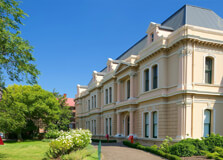
Queen Victoria Museum and Art Gallery
The Queen Victoria Museum and Art Gallery (QVMAG) is one of Launceston’s most treasured cultural institutions. Spread across two sites – the Art Gallery at Royal Park and the Museum at Inveresk – it is the largest regional museum in Australia. QVMAG offers a diverse collection that includes Tasmanian history, visual art, natural sciences, technology, and interactive displays. It is a place where the rich story of Tasmania comes to life through exhibitions, preserved objects, and learning spaces. Whether you’re interested in colonial art, dinosaurs, blacksmithing, or astronomy, QVMAG provides a unique and engaging experience for people of all ages. The museum and art gallery are a perfect combination of education, history, and inspiration in the heart of Launceston. How to Reach Queen Victoria Museum and Art Gallery, Launceston QVMAG has two locations in Launceston: Art Gallery (Royal Park): 2 Wellington Street, Launceston TAS 7250 Museum (Inveresk Precinct): 2 Invermay Road, Launceston TAS 7248 Both sites are easily accessible from the city centre: By Foot: The Royal Park gallery is about a 10-minute walk from the CBD. The Inveresk museum is about 15–20 minutes on foot. By Car: Ample parking is available at both sites, especially at Inveresk. By Bus: Local Metro buses stop near both venues. Check current schedules for routes. By Bicycle: Launceston has bike paths leading to both locations. Weather Launceston experiences mild to cool weather, making visits to indoor sites like QVMAG pleasant all year round. Summer (December to February) has average temperatures of 20–28°C. Winters (June to August) are cooler, averaging 5–12°C. Spring and autumn are ideal times to visit, with mild temperatures and fewer crowds. Since QVMAG is mostly indoors, it’s a great option on rainy or cold days. Both sites are climate-controlled, offering a comfortable environment regardless of outside weather. Timings Both QVMAG sites have the same general opening hours: Open daily: 10:00 AM – 4:00 PM Closed: Good Friday, Anzac Day morning (April 25), and Christmas Day It’s recommended to allocate at least 1.5 to 2 hours for each site to fully enjoy the exhibits. Why Queen Victoria Museum and Art Gallery is Famous in Launceston QVMAG is famous for being the largest regional museum in Australia and one of Tasmania’s premier cultural institutions. It is known for its diverse range of exhibitions that span: Tasmanian colonial history Aboriginal heritage Natural science and geology Modern and classical art Technology and industry A full planetarium experience It plays a crucial role in preserving the cultural and scientific heritage of Tasmania and attracts thousands of visitors annually. The museum is also well-known for its interactive children’s sections, making it a favorite for family outings. Entry and Visit Details Visiting QVMAG is accessible and affordable for all: Entry Fee: Free for general admission (some temporary exhibitions may have a small fee) Accessibility: Both sites are wheelchair-friendly, with ramps and lifts Facilities: Gift shops, restrooms, baby change stations, seating areas Guided Tours: Available for groups and schools by prior arrangement You can start your visit at either site. Many visitors begin at Inveresk for the history and science, then finish at Royal Park for the art collections. History and Architecture QVMAG was established in 1891, making it one of Australia’s oldest museums. The Royal Park site features a classic 19th-century building with heritage architecture. The Inveresk site, however, is a more modern space set within a former railway workshop. This contrast reflects Tasmania’s development—from colonial roots to modern innovation. The Inveresk museum was opened in the early 2000s as part of a redevelopment of Launceston’s industrial precinct. Its design merges old brick structures with contemporary gallery spaces, giving it a unique atmosphere that celebrates both heritage and progress. Things to Do at Queen Victoria Museum and Art Gallery Explore the Railway Workshops: Discover industrial machinery and old rail equipment at Inveresk. Visit the Planetarium: Enjoy educational astronomy shows projected on a dome ceiling (small fee may apply). See Dinosaur Fossils: Learn about Tasmania’s prehistoric past through fossils and geological displays. Admire Colonial and Modern Art: The Royal Park gallery features both historical and contemporary Tasmanian art. Experience Aboriginal Culture: View exhibits that showcase the rich traditions of Tasmania’s First Nations peoples. Hands-On Science: Kids and adults alike will enjoy the interactive science exhibits and discovery areas. Attend Workshops and Events: QVMAG hosts events throughout the year including talks, art classes, and temporary exhibitions. Facts and Tips about Queen Victoria Museum and Art Gallery, Launceston QVMAG was established in 1891 and is over 130 years old. The Planetarium at Inveresk is the only public planetarium in Tasmania. Admission is free, making it one of the best-value attractions in Tasmania. Photography is allowed in many areas but flash may be restricted. There is a strong focus on Tasmanian themes—don’t miss the local history sections. Great place for school excursions and educational outings. The museum and gallery rotate exhibits regularly—each visit can offer something new. Visit the gift shops for local art, books, and educational toys. Plan to visit both sites if you have time—they each offer unique experiences. The Queen Victoria Museum and Art Gallery is more than just a collection of artifacts—it’s a journey through Tasmania’s art, science, history, and people. Whether you’re a curious traveler, a local exploring your city, or a student eager to learn, QVMAG offers a rich, accessible, and engaging experience. It stands as a proud cultural beacon in Launceston and is not to be missed on your Tasmanian adventure.
Explore More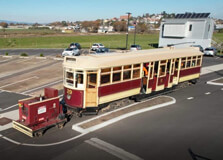
The Launceston Tramway Museum is a unique and fascinating attraction located in Launceston, Tasmania. It offers visitors a chance to step back in time and explore the rich history of Launceston’s tram network. This museum is run by passionate volunteers who have worked hard to restore trams and preserve the stories of the city’s public transport era. The museum is a family-friendly destination that gives you a hands-on experience with real trams and historical displays. At the Launceston Tramway Museum, you can see beautifully restored heritage trams, read about the people who worked on them, and even enjoy a ride on a functioning tram along a short track. It’s a nostalgic experience that connects the past with the present and offers insight into how Launceston once moved around the city. How to Reach Launceston Tramway Museum, Launceston The Launceston Tramway Museum is located in the Inveresk Precinct, near the Queen Victoria Museum and Art Gallery: Address: 2 Invermay Road, Launceston TAS 7248, Australia By Car: There is ample parking available near the Inveresk site, including free and paid spots. By Foot: The museum is just a 15-minute walk from Launceston’s city centre. By Bus: Metro Tasmania buses stop near Invermay Road and the Inveresk precinct. Check local schedules for route details. By Bicycle: Bike paths lead to the Inveresk precinct, and bike racks are available near the museum entrance. Weather Launceston experiences a temperate oceanic climate, which means mild to cool weather throughout the year. The city has four distinct seasons: Summer (December – February): Warm and pleasant with temperatures between 20°C and 28°C. Autumn (March – May): Mild weather, ideal for exploring. Expect 12°C to 20°C. Winter (June – August): Cooler and often cloudy, with temperatures from 3°C to 12°C. Spring (September – November): Fresh and breezy with temperatures between 10°C and 18°C. Since the Tramway Museum is mostly indoors, it can be visited year-round regardless of weather conditions. However, tram rides may be affected by heavy rain, so it’s good to check in advance on wet days. Timings The Launceston Tramway Museum operates on the following schedule: Open: Tuesday, Thursday, and Sunday Hours: 10:00 AM – 4:00 PM Closed: Public holidays and during extreme weather conditions Tram rides are usually available on operating days. It's a good idea to confirm the schedule on their official website or by phone before your visit. Why Launceston Tramway Museum is Famous in Launceston The Launceston Tramway Museum is famous because it preserves an important part of the city’s transport history. Launceston once had a well-developed tram network that operated from 1911 to 1952. The museum is dedicated to keeping that memory alive by showcasing original trams, equipment, and stories from that time. It's also known for its working tram ride – a rare and nostalgic experience that allows visitors to feel what public transport was like in early 20th-century Tasmania. The museum is particularly popular with families, train and tram enthusiasts, and anyone interested in history and technology. Entry and Visit Details Entry Fee: $10 for adults, $5 for children and concession. Family passes are available at $25. Tram Ride: Included in the ticket price on operating days Accessibility: The museum is wheelchair accessible, and assistance is available from volunteers. Facilities: Toilets, seating areas, and a small gift shop with tram-related souvenirs and books. Photography: Allowed and encouraged. Flash may be restricted near sensitive displays. Group bookings and school visits can be arranged in advance. Volunteers are often available to offer guided explanations and answer questions. History and Architecture The Launceston Tramway system began operation in 1911 and ran for over 40 years before ceasing in 1952. The museum was established later by local enthusiasts to preserve the legacy of the trams and the people who operated them. The museum building itself is housed in a former industrial shed, adding to the historic feel of the attraction. The museum includes original tram tracks, old railway tools, uniforms, signage, and detailed records of Launceston’s tram lines. Some of the trams on display have been lovingly restored to their original condition, complete with wooden seats, bell systems, and signage. Things to Do at Launceston Tramway Museum Ride the Heritage Tram: Enjoy a short journey on a restored tram through a section of original track near the museum. View Historical Displays: Learn about tram operations, see uniforms, tickets, and maintenance tools. Watch Restoration Work: Volunteers may be working on restoring old trams, and visitors can watch the process. Interactive Exhibits: Touch and learn exhibits are available for children and families. Read Tramway Stories: Explore the lives of tram drivers, conductors, and passengers through archived photographs and journals. Visit the Gift Shop: Purchase tram-themed memorabilia, books, and locally made crafts. Facts and Tips about Launceston Tramway Museum, Launceston Launceston’s tramway system ran from 1911 to 1952, with over 29 trams operating during its peak. The museum is run entirely by volunteers who are passionate about preserving this piece of local history. Tram No. 29 is one of the key attractions and has been fully restored to working condition. Great for kids and families – children love climbing into the old trams and pretending to be drivers! The museum is located next to the Queen Victoria Museum at Inveresk, making it easy to visit both on the same day. Best visited during sunny weather so you can also enjoy the outdoor tram ride. Bring your camera – the restored trams are great for photos. Allow at least 1–1.5 hours to explore the museum and take a tram ride. The Launceston Tramway Museum is a hidden gem in Tasmania’s cultural landscape. It offers a wonderful mix of nostalgia, education, and fun for visitors of all ages. Whether you’re a history buff, a transport enthusiast, or a family looking for a unique day out, this museum provides an unforgettable experience that celebrates the past while engaging with the present.
Explore More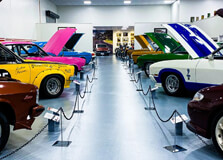
National Automobile Museum of Tasmania
The National Automobile Museum of Tasmania, located in Launceston, is a must-visit destination for car enthusiasts and history buffs alike. Established in 1987 by Geoff and Sylvia Smedley, the museum has grown to become one of Australia's most significant motoring collections. It showcases a diverse range of vehicles, from vintage classics to modern marvels, reflecting the evolution of automotive design and engineering over the past century. How to Reach National Automobile Museum of Tasmania, Launceston The museum is situated at 84 Lindsay Street, Invermay, Launceston, Tasmania 7248. It's conveniently located near the city center, making it easily accessible by various modes of transportation. By Car: Ample free parking is available on-site for cars and motorhomes. By Public Transport: Local bus services operate routes that stop near the museum. Check the latest schedules for specific routes. By Foot: The museum is approximately a 10-minute walk from Launceston's CBD. Weather Launceston experiences a temperate climate with four distinct seasons: Summer (December - February): Warm and dry, with temperatures ranging from 12°C to 26°C. Autumn (March - May): Mild temperatures and vibrant foliage, averaging between 8°C and 20°C. Winter (June - August): Cool and crisp, with temperatures between 2°C and 13°C. Spring (September - November): Blooming flora and moderate temperatures, ranging from 7°C to 19°C. The museum is indoors and climate-controlled, making it a comfortable visit year-round, regardless of weather conditions. Timings The National Automobile Museum of Tasmania operates daily, with the following hours: Regular Hours: 9:00 AM – 5:00 PM Winter Hours (June - August): 10:00 AM – 4:00 PM Closed: Christmas Day Why National Automobile Museum of Tasmania is Famous in Launceston The museum is renowned for its extensive and diverse collection of automobiles and motorcycles, representing over a century of motoring history. It offers visitors a unique opportunity to explore rare and significant vehicles, some of which are not found in any other collection. The museum's dedication to preserving and showcasing automotive heritage has made it a prominent cultural attraction in Launceston. Entry and Visit Details Admission fees are as follows: Adults: $18.00 Seniors: $15.00 Children under 16: $9.00 Family (2 adults and children under 16): $45.00 Adult Annual Pass: $45.00 The museum offers free parking and is wheelchair accessible. Facilities include restrooms, a gift shop, and an enquiry desk. Photography is allowed, making it a great spot for capturing memories. History and Architecture Founded in 1987 by Geoff and Sylvia Smedley, the museum was established to preserve and celebrate the history of motoring. Geoff Smedley, an internationally renowned motor racing engineer, played a pivotal role in restoring and displaying some of the world's rarest and finest cars. In September 2019, the museum relocated to a new purpose-built facility at 84 Lindsay Street, providing a spacious and modern environment to house its growing collection. Things to Do at National Automobile Museum of Tasmania Explore the Exhibits: View an impressive array of vehicles, including opulent Rolls-Royces, elegant Bentleys, classic Jaguars, and unique motorcycles. Visit the Gift Shop: Browse one of the largest automobilia gift shops in the country, offering model cars, books, memorabilia, and more. Attend Special Exhibitions: The museum regularly updates its displays and hosts special exhibitions, providing fresh experiences for repeat visitors. Educational Opportunities: Learn about the evolution of automotive design and engineering through informative displays and exhibits. Facts and Tips about National Automobile Museum of Tasmania, Launceston The museum's collection spans over 100 years of automotive history, featuring both traditional and contemporary marques. It houses some unique exhibits not found in any other collection. The facility is fully accessible, catering to visitors with mobility needs. Located across the road from the Silo Hotel and Riverbend Park, it's an ideal addition to a day of local sightseeing. Plan to spend at least 1-2 hours to fully appreciate the exhibits. Check the museum's official website or contact them directly for the latest information on exhibitions and events. The National Automobile Museum of Tasmania offers a captivating journey through the history of motoring. Whether you're an automotive enthusiast or simply curious about the evolution of transportation, the museum provides an engaging and educational experience for visitors of all ages.
Explore More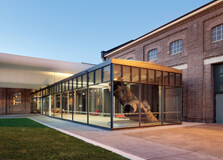
Located in the heart of Newcastle, New South Wales, the Newcastle Museum is one of the city's top attractions. This family-friendly museum offers an engaging and informative experience for all ages. With a focus on the region’s history, science, and innovation, the museum showcases Newcastle’s transformation from a coal mining and steel manufacturing hub to a modern, vibrant city. How to Reach Newcastle Museum, Newcastle Newcastle Museum is conveniently located at 6 Workshop Way, Honeysuckle, which is close to the city centre. You can reach the museum by multiple means: By Train: The museum is a short walk from the Newcastle Interchange Station. The station is well-connected with other major cities like Sydney. By Bus: Several local buses stop nearby, making it easy to reach from different suburbs within Newcastle. By Car: Visitors can drive to the museum, with metered parking available in the surrounding area. By Light Rail: The Newcastle Light Rail stops at Honeysuckle Station, which is just a few minutes' walk from the museum. Weather in Newcastle Newcastle has a temperate climate with warm summers and mild winters. The average summer temperature ranges from 20°C to 30°C (68°F to 86°F), while in winter, it ranges between 8°C and 18°C (46°F to 64°F). Rainfall is fairly consistent throughout the year, so it's a good idea to check the weather forecast before visiting. Timings of Newcastle Museum The museum is open from Tuesday to Sunday, between 10:00 AM and 5:00 PM. It is closed on Mondays, Good Friday, Christmas Day, and Boxing Day. It’s best to check the official website for any special closures or extended holiday hours. Why is Newcastle Museum Famous? Newcastle Museum is renowned for its rich historical exhibits, interactive science displays, and its role in preserving the cultural heritage of the region. One of the key attractions is the 'Supernova' science centre, which provides hands-on science experiences for children and adults alike. The museum is also known for its thoughtful exhibitions on Aboriginal culture, steelworks history, and local innovations. Entry and Visit Details General entry to the Newcastle Museum is free, making it an accessible destination for everyone. However, some special exhibitions and events may require a paid ticket. Visitors should allow at least 1.5 to 2 hours to explore the museum fully. Group tours and school excursions are available and should be booked in advance. History and Architecture of Newcastle Museum The museum is housed in a beautifully restored 19th-century railway workshop. Originally part of the Honeysuckle Railway Workshops, the site reflects the city’s industrial past. The architecture blends historical charm with modern elements, creating a unique atmosphere that enhances the visitor experience. The museum opened at its current location in 2011, having moved from its original home in the former Castlemaine Brewery building. The building’s layout preserves its industrial heritage with large open spaces, high ceilings, and exposed brickwork. These architectural features create a perfect backdrop for the museum’s diverse collections and exhibitions. Things to Do at Newcastle Museum There’s a lot to see and do at Newcastle Museum. Some highlights include: Supernova: An interactive science centre that offers hands-on experiments and educational fun for children and families. The Fire and Earth Exhibit: This exhibit highlights Newcastle’s coal mining and steel-making history, featuring original equipment and immersive displays. A Newcastle Story: A permanent exhibition that takes visitors through the city’s past, from early Aboriginal culture to modern development. Special Exhibitions: The museum regularly hosts temporary exhibitions featuring contemporary art, science, and history topics. Events and Workshops: The museum hosts community events, educational programs, and school holiday workshops throughout the year. Interesting Facts About Newcastle Museum The museum was originally established in 1988 and moved to its current location in 2011. It is situated in a heritage-listed site, which once served as a key industrial workshop during Newcastle’s steel era. The museum is committed to sustainability and includes energy-efficient designs and recycling initiatives in its operations. It showcases a significant collection of Aboriginal artefacts and stories from the Awabakal and Worimi people. The Fire and Earth exhibit features a recreated underground coal mine experience. Tips for Visiting Newcastle Museum Plan Ahead: Check the museum’s website for current exhibitions and events so you can make the most of your visit. Visit Early: Arriving in the morning helps avoid crowds, especially during school holidays and weekends. Family Friendly: Bring your children along—there are plenty of kid-friendly exhibits and activities. Photography: Most areas allow photography, but check for signs and restrictions in temporary exhibits. Accessibility: The museum is wheelchair accessible and provides facilities for people with disabilities. Combine with Nearby Attractions: The museum is close to the waterfront, cafes, and the Honeysuckle precinct, making it easy to plan a full day out. Conclusion The Newcastle Museum is more than just a place to learn about history—it’s a dynamic space that celebrates culture, innovation, and community. Whether you're a local resident or a tourist, the museum offers a rich and interactive experience. With free entry, educational displays, and its central location, it’s a must-visit destination in Newcastle.
Explore More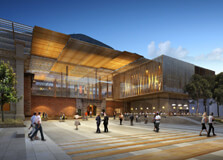
Tasmanian Museum and Art Gallery
The Tasmanian Museum and Art Gallery (TMAG) is one of Australia's most significant cultural institutions, located in Hobart. Established in 1843, it is Tasmania’s premier museum, housing extensive collections of natural history, art, and cultural heritage exhibits. How to Reach Tasmanian Museum and Art Gallery, Tasmania By Car: TMAG is situated in Hobart’s city center, with parking facilities nearby. By Bus: Public transport services from different parts of Hobart stop near the museum. By Foot: A short walk from major city landmarks, including the waterfront. Weather in Hobart Hobart experiences a temperate maritime climate: Summer (December-February): 12-24°C (54-75°F), ideal for exploring the city. Autumn (March-May): 8-20°C (46-68°F), with beautiful fall foliage. Winter (June-August): 3-13°C (37-55°F), with occasional snowfall on nearby mountains. Spring (September-November): 6-19°C (43-66°F), perfect for sightseeing. Timings of Tasmanian Museum and Art Gallery Open from Tuesday to Sunday, 10 AM to 4 PM. Closed on Mondays and public holidays. Why is Tasmanian Museum and Art Gallery, Tasmania Famous? TMAG is famous for its vast collection of Tasmanian Aboriginal artifacts, colonial history displays, and contemporary art exhibitions. It also features unique exhibits on Tasmania's wildlife and environment. Entry and Visit Details Entry Fees: Free admission, with some special exhibitions requiring a ticket. Facilities: Guided tours, educational programs, and a museum shop available. History and Architecture TMAG was established in 1843, making it one of the oldest museums in Australia. The museum is housed in a series of historic buildings, including a former bond store and an early 19th-century courthouse. Things to Do Explore Aboriginal Heritage Exhibits: Learn about Tasmania’s indigenous history. Visit the Colonial Galleries: Discover Tasmania’s past through artifacts and documents. See the Antarctic Exhibition: A fascinating display of Tasmania’s connection to Antarctica. Enjoy Contemporary Art: View works from local and international artists. Participate in Workshops: Engage in family-friendly educational activities. Facts about Tasmanian Museum and Art Gallery, Tasmania It is the second-oldest museum in Australia. Houses one of the most extensive collections of Tasmanian Aboriginal artifacts. Located in a heritage precinct featuring 19th-century architecture. Tips for Visiting Check the museum’s website for special exhibitions and events. Allow at least 2-3 hours for a comprehensive visit. Visit early in the day to avoid crowds. Enjoy a coffee at the museum’s café while taking in the surroundings.
Explore More